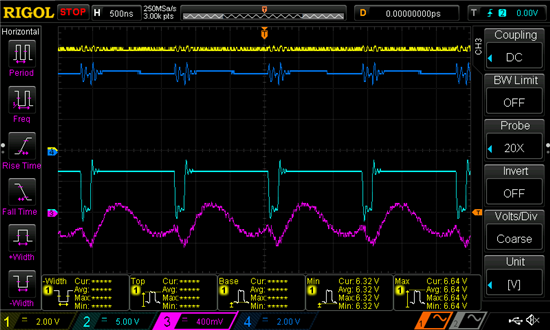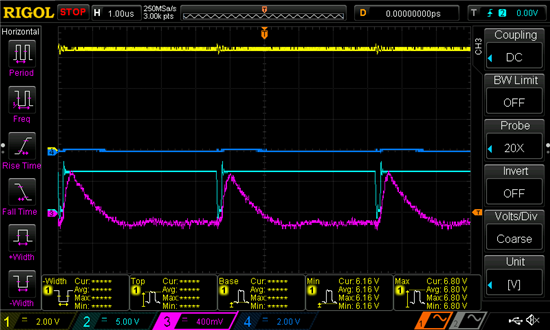Hello,
I used Workbench Design Center for a buck regulator with this characteristics :
Vin : 6.5V to 9V | Vout : 6V 3A | Ambient temp : 20°C
It gave me a design with the LM25085, then I ordered the necessary components and tried it in dead-bug prototyping. But after quick tests without load I observed a characteristic curve which doesn't correspond to what I was expecting.
There is 4 point :
1. in every case, the output tension is not stabilized at 6V
2. between 6.5V and 7.8V on input tension, the signal is disturbed at the output
3. above 7.8Volts there is no more noise but it is still not stabilized at 6V
4. when I put a load on the output (resistor 6W 22Ohms), the tension collapsed
Can you tell me if this schematic is possible? I tried to use the closest components adviced in the BOM. Maybe some of them doesn't work for this case...



